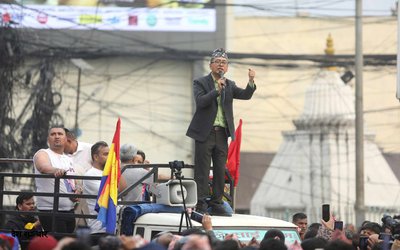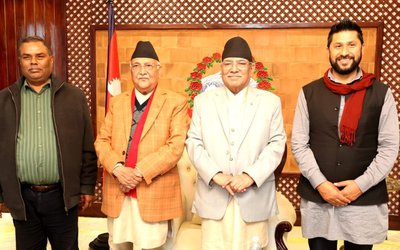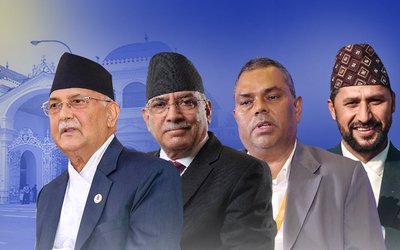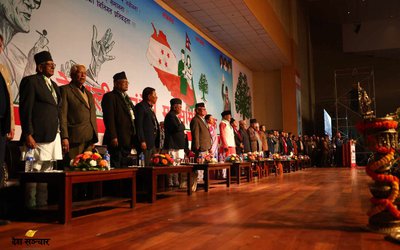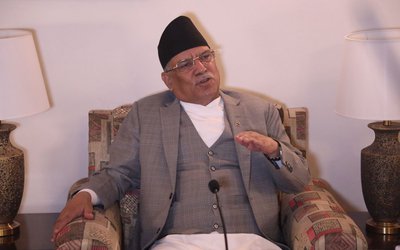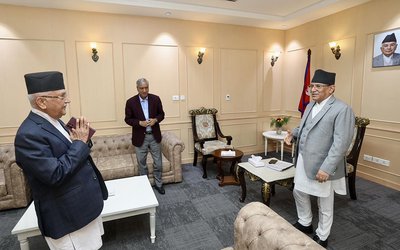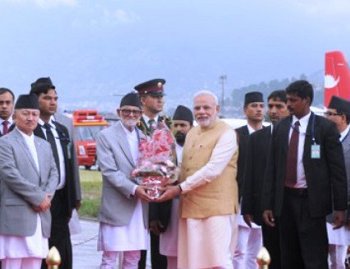
From the streets to the parliament, Modi was everywhere. He was the talk of the town, the name on everyone’s lips and the figure on everyone’s television screen.
Visiting Nepal in the capacity of Prime Minister for the first time and the first Indian PM to do so in 17 years, Narendra Modi’s visit to Nepal has widely been seen as a huge success. It marked a new beginning in the Nepal-India relationship. Not only did the charismatic chief minister-turned prime minister of the Bharatiya Janata Party mesmerize the Nepalese with his spellbinding speech in the parliament and goodwill gestures on the Kathmandu streets, he also laid the foundation for a new level of bilateral ties between the South Asian nations.
The anti-Indian feeling persisting among many Nepalese, thanks to the constant political interference and the big brotherly attitude over the years had long marred the relationship between Nepal and. The political meddling by India, especially its bureaucracy and intelligence agencies, in Nepal's internal affairs had in recent years expanded to micro-managing domestic politics and governance. Hands in the glove were the Nepali leaders themselves who would seek to pursue and promote personal interest by currying favour with the Indian establishment.
A little more than two months into the office, prime minister Modi has helped bring about a change in the environment. Firstly, his decision to choose Nepal as his second destination of foreign visit, after his brief sojourn to Bhutan, was a very strategic one. It came in the background of his approach to strengthen relations with South Asian neighbours. His visit to Nepal signalled that his government was focused on resetting ties in the country's backward by placing priority to its immediate neighbours.
Perhaps because of the importance the Indian PM did place on Nepal, his visit reflected the new approach India has towards Nepal. During his address to the parliament, Modi declared that Nepal was a sovereign country capable of making its own decisions. Much to the joy of many, he lauded the country’s democratic practices and encouraged the country to speed up the development process.
In the carefully drafted speech, he avoided himself from talking about contentious issues such as the purported Indian sympathy and backing to the cause being raised by the Madhesi parties from the southern plains bordering India. He also refrained from raising a traditional issue that of Nepali soil being allegedly used by elements hostile to India. Such references are normally targeted at Pakistan and its intelligence agencies which, India believe, have been taking advantage of Nepal's open borders with India to 'export' terrorism.
Not surprisingly, the outcome of visit was greeted in both capitals with a new hope. While the Nepali leaders and the intelligentsia alike spared no words in hailing it as a major development in the bilateral relations, the Indian government termed the Modi visit to have given a "new impetus, direction and dynamism" to the ties between Nepal and India.
Besides injecting a fresh air into the relationship between Nepal and India, Modi also announced a series of assistance capped by a Rs.10,000 crores (1 billion dollar) in soft line credit to Nepal to spend on its infrastructure and power projects. This marked a four-times increase in a similar credit pledged to Nepal during the-then prime minister Baburam Bhattarai's visit to India.
Having raised expectations to a new high following his landmark visit to Nepal, prime minister Narendra Modi now faces the challenge of delivering on the promises. This is an area where, critics say, India has been found wanting. As a well-known Indian analyst C. Rajamohan also rightly wrote in a recent column, there is a perception in Nepal, rightly so, that "India promises, China delivers." Modi will have to change this perception. Thankfully, he seems to have realised what is expected of him. By making reference to the long-delayed Pancheswar multi-purpose project on the border river of Mahakali, Modi vowed to get it executed soon and ordered his officials to prepare the long-pending detailed project report (DPR) within a year.
The construction of the Hulaaki Rajmarg in the southern plains of Nepal and the compensation that India owed to Nepal over the Koshi project are some other promises that India is accused of not meeting. Progress on these two and theexecution of Pancheswar will be the key tests of the Modi government whether it is different from its predecessors.
More than completing the projects, they will serve to mark a real shift in how India sees and treats Nepal. Delivering on promises will remove the long-standing mistrust and crisis of confidence between the two countries. Once that is done, other things should fall in place without much difficulty. There have been persistent doubts about whether the things would progress as desired. The Doubting Thomases have pointed, not unfairly though, to the traditional thinking and the functioning of Indian bureaucracy and intelligence agencies which, they say, have not been able to overcome the colonial mindset inherited from the British rulers. Modi will have to prove these Doubting Thomases wrong.
If, however, as some analysts suggested, the post-independence born Modi's mind and body language is indicative of a tectonic shift in India's policy and behaviour with its neighbours including Nepal from that of his predecessors all of whom were born in the colonial period, there should be no reason to be optimistic. If "the Modi doctrine" has indeed replaced "the Nehru doctrine", Nepal too can be expected to feel the difference and benefit immensely. The test for Modi begins now.
As for Nepal, it will have to do its homework so as to make most of the new opportunities. For this, it would do well to be careful in not doing anything that gives ammunition to the conservative elements in the Delhi establishment. The first and the foremost task before the Nepali establishment would be to forge what has so far been elusive -- a national consensus on foreign policy especially on relations with India. The political parties may fight on the nitty gritty of the proposed constitution, power sharing and power devolution, but they must stop fighting over the ties with the country's most important element of foreign relations.
The first indication of whether the two countries have left the baggage of the bitter past and readied to move on will perhaps been seen when prime minister Modi comes avisiting next. He is due in Nepal in three months' time in November for the South Asian regional summit (SAARC). Modi has said himself that he looks forward to be in Kathmandu again and that he plans to go beyond Kathmandu -- to the land of Sita, Janakpur, and the land of Buddha, Lumbini. This is by no means a small gesture. Both Nepal and India will have to work in mutual trust, confidence and respect to translate that gesture into a concrete action. Therein lies the true test of the Modimania.
- Ukrainian Crisis And The World (Dis)Order
- Apr 22, 2022
- China’s Cautious Steps In The Graveyard Of Empires
- Aug 18, 2021
- Foreign Aid On The Fence!
- Aug 08, 2021
- Communist Party of China centenary celebrations Reading between the lips
- Jul 14, 2021
- Second Wave Of Covid-19 In India: Deadly Blow To The Economy
- Jun 23, 2021


